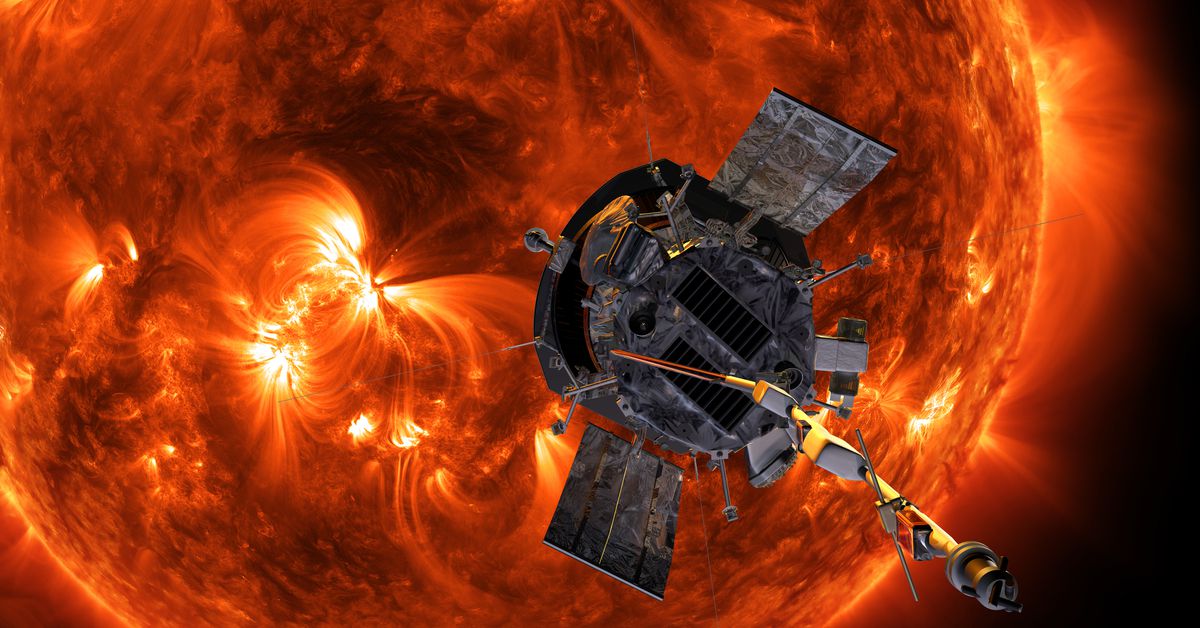On December 26th, NASA’s Parker Solar Probe transmitted a signal back to Earth, indicating that it has survived its historic flyby of the Sun. The probe, which was launched in 2018, had been traveling through space for over two years, preparing for this momentous occasion.
A Record-Breaking Achievement
The Parker Solar Probe’s closest approach to the Sun marked a new record for any human-made object. On December 24th, the probe flew just 3.8 million miles from the surface of the Sun, reaching speeds of up to 430,000 miles per hour. This achievement is a testament to the ingenuity and determination of NASA’s engineers and scientists.
Mission Objectives
The Parker Solar Probe was designed to study the corona, the outer atmosphere of the Sun, in unprecedented detail. By flying close to the Sun, the probe aims to provide valuable insights into solar wind, the heat generated by the Sun, and how energetic particles are accelerated to near light speed.
The Close Encounter
During its flyby, the Parker Solar Probe was out of contact with mission operations on Earth. However, now that NASA has confirmation of the mission’s success, scientists can breathe a sigh of relief. The probe is expected to send detailed telemetry data on January 1st, which will provide valuable information about its status and performance.
The Importance of Studying the Sun
Studying the Sun is crucial for understanding various aspects of our solar system. By exploring the corona, scientists can gain insights into the mechanisms that drive solar activity, including sunspots, flares, and coronal mass ejections. These events have a significant impact on Earth’s magnetic field and upper atmosphere.
The Parker Solar Probe’s Unique Design
To withstand the extreme temperatures near the Sun, the Parker Solar Probe was designed with a Sun-facing heat shield that reaches temperatures of up to 2,500 degrees Fahrenheit (1,370 degrees Celsius). Meanwhile, the probe itself remains at a relatively cool temperature of around 85 degrees Fahrenheit (30 degrees Celsius). This unique design allows the probe to collect data while minimizing damage from the intense heat.
The Parker Solar Probe’s Journey
Launched on August 12th, 2018, the Parker Solar Probe has been traveling through space for over two years. The mission began with a series of complex maneuvers that placed the probe into an elliptical orbit around the Sun. Over time, the probe gradually decreased its distance from the Sun, eventually reaching its closest approach on December 24th.
The Science Behind the Mission
The Parker Solar Probe is equipped with four instruments designed to collect data on various aspects of the corona:
- Solar Wind Electrons Experiment (SWEAP)
- Measures the composition and energy of solar wind electrons
- Wide-Field Imager for Parker Solar Probe (WISPR)
- Observes the corona in visible light, providing insights into its structure and dynamics
- Parker Solar Probe ISM Experiment (ISOIS)
- Analyzes the composition of the interstellar medium, which is the material that fills the space between stars
- Radio Frequency Spectrometer (RS)
Conclusion
The successful flyby of the Parker Solar Probe marks a significant milestone in our understanding of the Sun and its behavior. By studying the corona up close, scientists can gain valuable insights into solar activity and its impact on Earth’s magnetic field and upper atmosphere. The data collected by the probe will help scientists refine their models of the Sun’s behavior, ultimately contributing to improved forecasts and predictions.
Future Missions
The success of the Parker Solar Probe paves the way for future missions that will continue to explore the Sun and its corona. Future probes will be designed to study specific aspects of solar activity, such as sunspots, flares, and coronal mass ejections. These missions will build on the foundation laid by the Parker Solar Probe, providing an even deeper understanding of our solar system.
References
- [1] NASA (2020). Parker Solar Probe Completes Closest Approach to Sun
- [2] Johns Hopkins Applied Physics Laboratory (2018). Parker Solar Probe Launches on August 12th
- [3] Parker Solar Probe (2019). Mission Objectives and Science Goals
Note: The references provided are for informational purposes only and may not be up-to-date. They serve as a starting point for further research and exploration of the topic.




